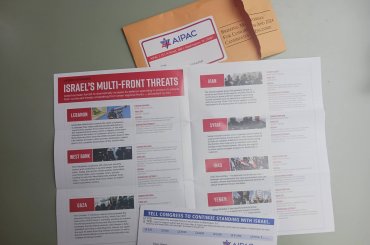Coronavirus cases are rapidly rising in Palestine, with daily infection rates reaching triple digits for the first time since the global pandemic hit the occupied territories.
Last week, we told you that the second wave of the virus had hit Palestine, with the highest daily rate of infection at 70 cases in a single day.
Since then that number has shot up with today, June 23, as the highest number of cases recorded in a single day, with 178 new cases. Yesterday there were 156 new cases, and the day before that, there were 115.
The new cases have brought the number of total COVID-19 cases in the East Jerusalem, Gaza, and the West Bank to at least 1,373 cases, with the majority in the West Bank.
According to the Palestinian Ministry of Health, 52% of the cases are in the West Bank district of Hebron, 15% are in East Jerusalem, 10% in the West Bank district of Jerusalem, 6% in Ramallah and the surrounding areas, 5% in Bethlehem, and 5% in Gaza.
More than 30% of the cases, according to the ministry, originated from Palestinian laborers working in Israel, or people who interacted with them upon their return home to the West bank.
The second largest source of the spread, at 20% of total cases, has been traced back to social gatherings like business meetings, weddings, graduation parties, and funerals — all of which have been taking place unhindered for weeks.
More than 80,000 tests have been conducted by the ministry since the first outbreak back in March, though the ministry has yet to release how many tests it is conducting on average per day.
Despite the fact that things are clearly so much worse this time around, the difference in responses from the government between the first and second wave couldn’t be more different.
The first time around, Bethlehem, the epicenter of the outbreak, was shut down immediately, with other cities and governorates following suit quickly after. Movement between and within cities was being highly restricted, non essential business were shut down, and overall the streets were much emptier.
This time around, there’s an understanding that the government is under an immense amount of pressure from the public to keep the economy open. They simply can’t afford the economic and social impacts of what would happen if the economy were to be shut down (i.e. potentially violent confrontations with their own citizens).
While the public opinion at the beginning of the COVID-19 crisis towards the government was immensely positive, people eventually became frustrated with the quarantine, and now, the government is finding it hard to enforce the same social distancing orders they did the first time around.
For now, the PA announced a five-day closure of the Hebron district over the weekend, and put forward a set of health protocol “recommendations” for people to follow.
Rather than enforcing, the government is asking people to socially distance, wear their masks, restrict non essential travel between cities, and avoid large gatherings.
The dangers of this second wave seem to be resonating with at least some percentage of the population. In Bethlehem, where I live, the number of people wearing masks in public has significantly gone up over the past few days.
That being said, restaurants and cafes are still open and at full capacity, and there seems to be a common mentality that because most cases in Palestine have had mild or no symptoms, “even if I get sick, it’s not going to be that bad.”
If people’s symptoms do worsen, and some people get sick enough to need ventilators, the government may have no choice but to shut things down for fear of the health system collapsing on itself.


